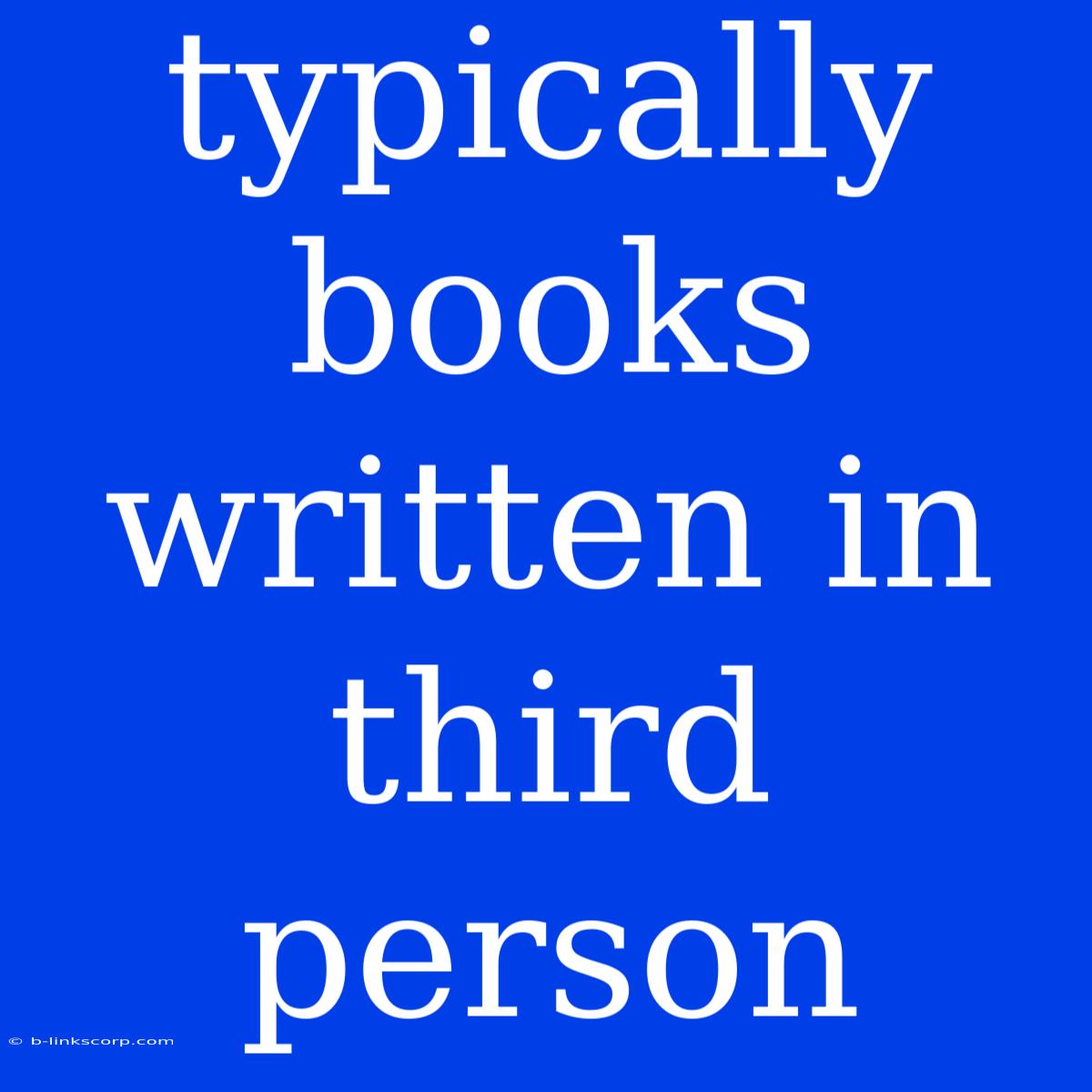The Power of Perspective: Exploring the Third Person Narrative
The third person narrative is a versatile and widely used storytelling technique, employed in countless novels, short stories, and screenplays. It offers a unique perspective, allowing readers to delve into the minds and emotions of characters while maintaining a degree of objectivity.
What is Third Person?
Third person narration refers to a story told from the perspective of an outside observer, often using pronouns like "he," "she," "it," or "they." This perspective allows for a broader scope, encompassing the thoughts and actions of multiple characters, creating a more comprehensive and immersive experience.
Types of Third Person Narration
There are three main types of third person narration:
1. Third Person Omniscient: This is the most traditional form, where the narrator knows everything about all the characters and their inner thoughts, feelings, and motivations. They can move freely between characters, offering a godlike view of the story.
2. Third Person Limited: This perspective focuses on the thoughts and feelings of one specific character. The narrator reveals this character's inner world while remaining external to the others. This allows for a deeper understanding of a single character's journey.
3. Third Person Objective: In this approach, the narrator is like a detached observer, reporting events without revealing any character's inner thoughts or feelings. It focuses on the external actions and dialogue, creating a sense of realism and suspense.
Advantages of Third Person Narration
- Broad Scope: It allows for a wider perspective, exploring the motivations and inner lives of multiple characters.
- Objectivity: It provides a sense of detachment, allowing readers to form their own opinions about the characters and events.
- Flexibility: The narrator can move freely between characters, offering a dynamic and engaging narrative experience.
- Immersion: The third person perspective can create a sense of immersion, allowing readers to experience the story from the outside while understanding the characters' internal struggles.
Examples of Books Written in Third Person
Some of the most beloved and celebrated novels have employed the third person perspective, including:
- "The Lord of the Rings" by J.R.R. Tolkien (Third Person Omniscient)
- "Pride and Prejudice" by Jane Austen (Third Person Limited)
- "Gone Girl" by Gillian Flynn (Third Person Limited)
- "The Great Gatsby" by F. Scott Fitzgerald (Third Person Limited)
- "The Hunger Games" by Suzanne Collins (Third Person Limited)
Conclusion
The third person narrative offers a powerful storytelling tool, allowing authors to create intricate worlds, complex characters, and gripping narratives. By carefully choosing the type of third person narration, writers can craft unique and engaging reading experiences for their audiences.

